✷ Laser
Its full name is Light Amplification by Stimulated Emission of Radiation. This literally means "amplification of light-excited radiation". It is an artificial light source with different characteristics from natural light, which can spread to a long distance in a straight line and can be gathered in a small area.
✷ Difference Between Laser and Natural Light
1. Monochromaticity
Natural light encompasses a wide range of wavelengths from ultraviolet to infrared. Its wavelengths vary.
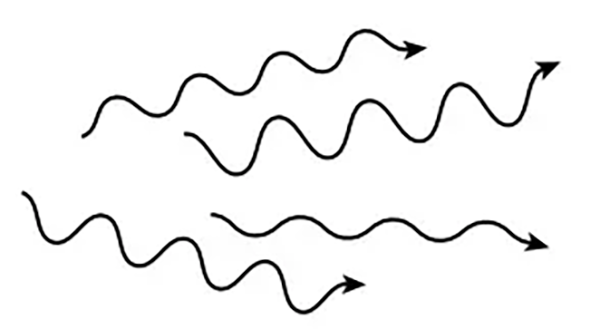
Natural light
Laser light is a single wavelength of light, a property called monochromaticity. The advantage of monochromaticity is that it increases the flexibility of optical design.
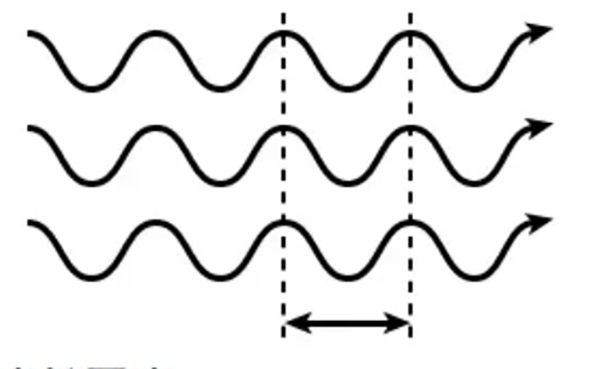
Laser
The refractive index of light varies depending on the wavelength.
When natural light passes through a lens, diffusion occurs due to the different types of wavelengths contained within. This phenomenon is called chromatic aberration.
Laser light, on the other hand, is a single wavelength of light that only refracts in the same direction.
For example, while the lens of a camera needs to have a design that corrects for distortion due to color, lasers only need to take that wavelength into account, so the beam can be transmitted over long distances, allowing for a precise design that concentrates light in a small spot.
2. Directivity
Directionality is the degree to which sound or light is less likely to diffuse as it travels through space; higher directionality indicates less diffusion.
Natural light: It consists of light diffused in various directions, and to improve directionality, a complex optical system is needed to remove light outside the forward direction.
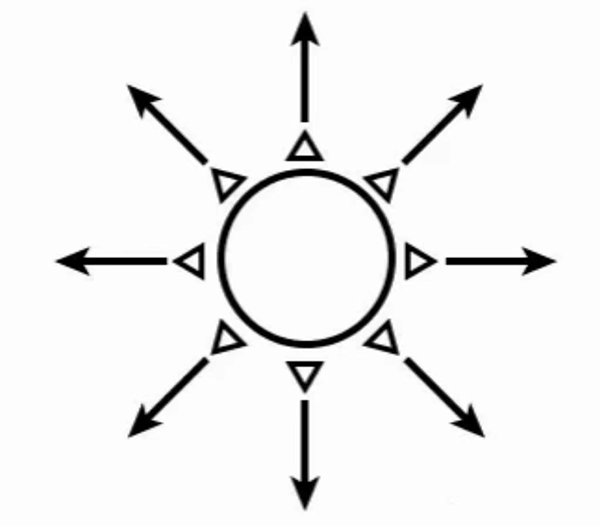
Laser: It is a highly directional light, and it is easier to design optics to allow the laser to travel in a straight line without spreading, allowing for long-distance transmission and so on.

3. Coherence
Coherence indicates the degree to which light tends to interfere with each other. If light is considered as waves, the closer the bands are the higher the coherence. For example, different waves on the water surface may enhance or cancel each other when they collide with each other, and in the same way as this phenomenon, the more random the waves the weaker the degree of interference.
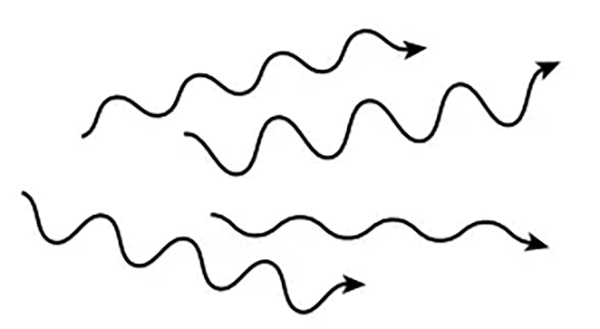
Natural light
The laser's phase, wavelength, and direction are the same, and a stronger wave can be maintained, thus enabling long-distance transmission.
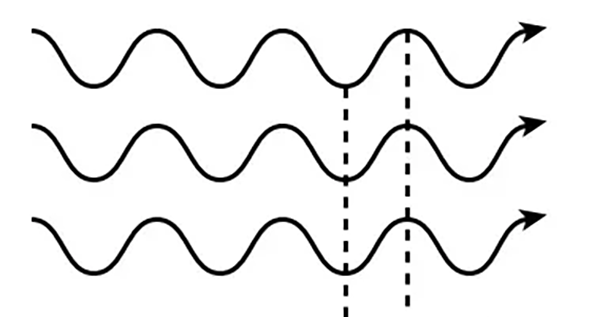
Laser peaks and valleys are consistent
Highly coherent light, which can be transmitted over long distances without spreading, has the advantage that it can be gathered into small spots through a lens, and can be used as high-density light by transmitting the light generated elsewhere.
4. Energy density
Lasers have excellent monochromaticity, directivity, and coherence, and can be aggregated into very small spots to form high energy density light. Lasers can be scaled down to near the limit of natural light that cannot be reached by natural light. (Bypass limit: It refers to the physical inability to focus light into something smaller than the wavelength of light.)
By shrinking the laser to a smaller size, the light intensity (power density) can be increased to the point where it can be used to cut through metal.
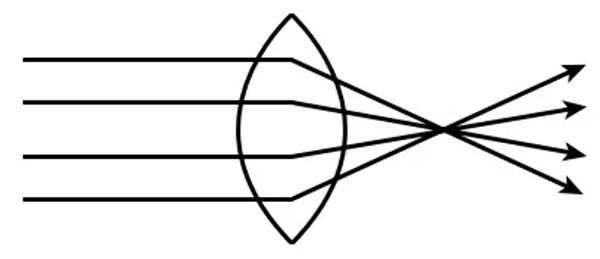
Laser
✷ Principle of Laser Oscillation
1. Principle of laser generation
To produce laser light, atoms or molecules called laser media are needed. The laser medium is externally energized (excited) so that the atom changes from a low-energy ground state to a high-energy excited state.
The excited state is the state in which the electrons within an atom move from the inner to the outer shell.
After an atom transforms to an excited state, it returns to the ground state after a period of time (the time it takes to return from the excited state to the ground state is called the fluorescence lifetime). At this time the received energy is radiated in the form of light to return to the ground state (spontaneous radiation).
This radiated light has a specific wavelength. Lasers are generated by transforming atoms into an excited state and then extracting the resulting light to utilize it.
2. Principle of Amplified Laser
Atoms that have been transformed to an excited state for a certain period of time will radiate light due to spontaneous radiation and return to the ground state.
However, the stronger the excitation light, the more the number of atoms in the excited state will increase, and the spontaneous radiation of light will also increase, resulting in the phenomenon of excited radiation.
Stimulated radiation is the phenomenon in which, after incident light of spontaneous or stimulated radiation to an excited atom, that light provides the excited atom with energy to make the light the corresponding intensity. After excited radiation, the excited atom returns to its ground state. It is this stimulated radiation that is utilized for the amplification of lasers, and the greater the number of atoms in the excited state, the more stimulated radiation is continuously generated, which allows the light to be rapidly amplified and extracted as laser light.

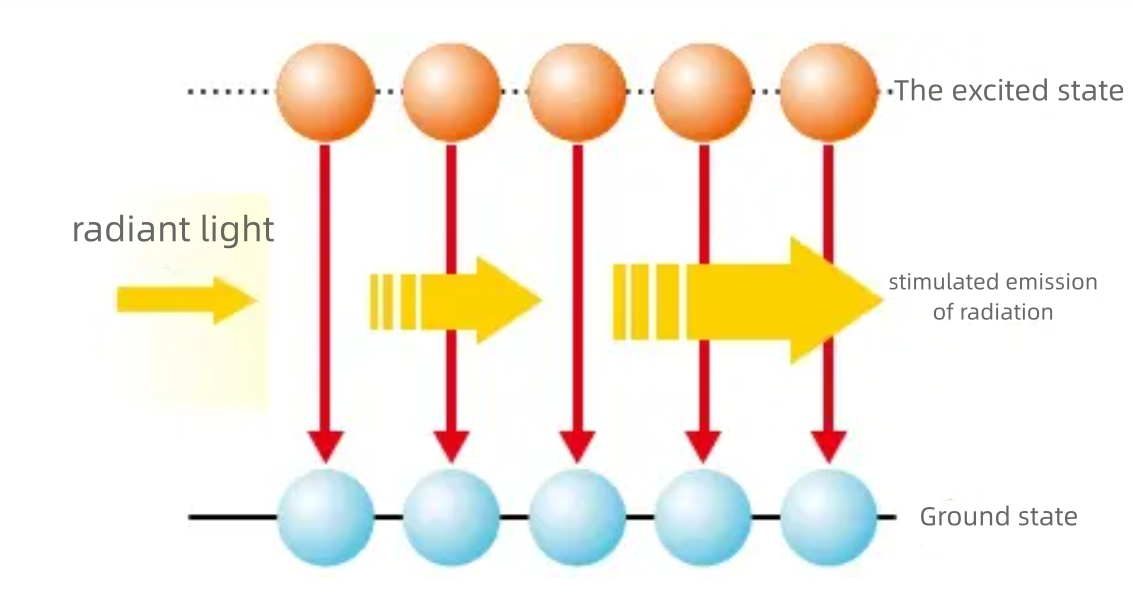
✷ Construction of the Laser
Industrial lasers are broadly categorized into 4 types.
1. Semiconductor laser: A laser that uses a semiconductor with an active layer (light-emitting layer) structure as its medium.
2. Gas lasers: CO2 lasers using CO2 gas as the medium are widely used.
3. Solid-state lasers: Generally YAG lasers and YVO4 lasers, with YAG and YVO4 crystalline laser media.
4. Fiber laser: using optical fiber as the medium.
✷ About Pulse Characteristics and Effects on Workpieces
1. Differences between YVO4 and fiber laser
The major differences between YVO4 lasers and fiber lasers are peak power and pulse width. Peak power represents the intensity of light, and pulse width represents the duration of light. yVO4 has the characteristic of easily generating high peaks and short pulses of light, and fiber has the characteristic of easily generating low peaks and long pulses of light. When the laser irradiates the material, the processing result can vary greatly depending on the difference in pulses.
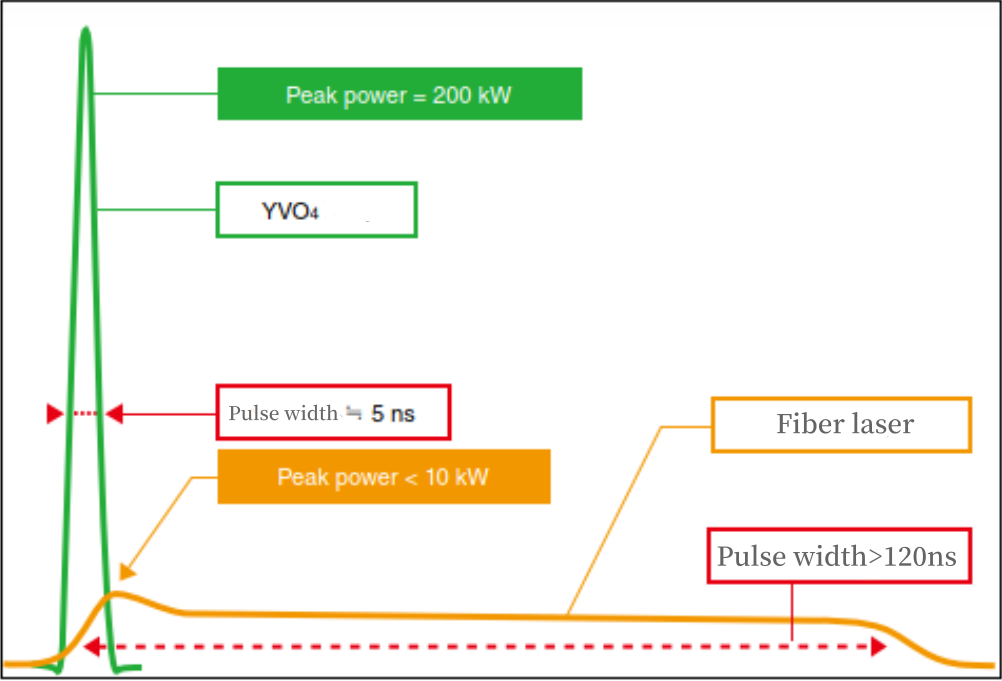
2. Impact on materials
The pulses of the YVO4 laser irradiate the material with high intensity light for a short period of time, so that the lighter areas of the surface layer heat up rapidly and then cool down immediately. The irradiated portion is cooled to a foaming state in the boiling state and evaporates to form a shallower imprint. The irradiation ends before the heat is transferred, so there is little thermal impact on the surrounding area.
The pulses of the fiber laser, on the other hand, irradiate low-intensity light for long periods of time. The temperature of the material rises slowly and remains liquid or evaporated for a long time. Therefore, the fiber laser is suitable for black engraving where the amount of engraving becomes large, or where the metal is subjected to a large amount of heat and oxidizes and needs to be blackened.
Post time: Oct-26-2023
